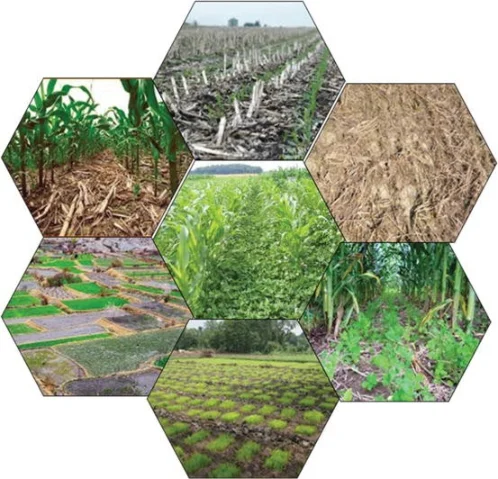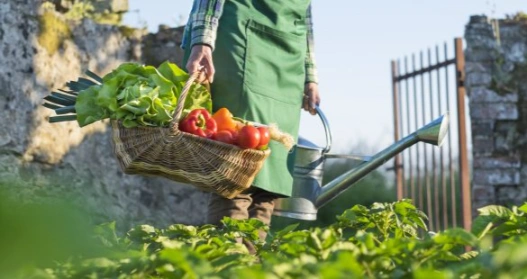What is the Definition of Agriculture, Agriculture is the science and practice of cultivating plants and animals for food, fiber, fuel, and other purposes.
Agriculture is one of the oldest and most essential human activities, as it provides us with the basic necessities of life.
Agriculture also plays a vital role in the economy, society, and environment of many countries and regions.
In this blog post, we will explore the definition of agriculture, its history, types, benefits, challenges, and future prospects. We will also learn how agriculture affects our lives and the world around us.

History Of Agriculture
Agriculture is believed to have originated about 10,000 years ago in the Fertile Crescent, a region that spans parts of modern-day Iraq, Syria, Turkey, and Iran.
The earliest farmers domesticated crops such as wheat, barley, lentils, and peas, and animals such as sheep, goats, and cattle. They also developed irrigation systems, plows, and other tools to improve their productivity and efficiency.
Over time, agriculture spread to other parts of the world, such as Africa, Asia, Europe, and the Americas, and diversified into different forms and methods.
Agriculture enabled the development of civilizations, cultures, religions, and languages, as well as trade, commerce, and innovation.
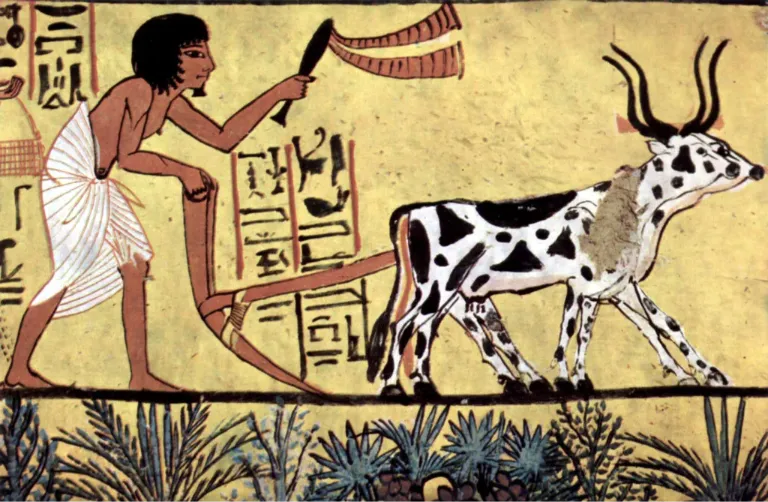
Types Of Agriculture
Agriculture can be classified into different types based on various factors, such as the crops and animals grown, the climate and soil conditions, the level of technology and mechanization, and the scale and purpose of production.
Some of the common types of agriculture are:
Subsistence Agriculture
This is the type of agriculture where farmers grow enough food for themselves and their families, with little or no surplus for sale or trade. Subsistence agriculture is usually practiced in developing countries and rural areas, where resources and infrastructure are limited.
Subsistence agriculture is often based on traditional knowledge and techniques, and relies on manual labor and simple tools.
Commercial Agriculture
This is the type of agriculture where farmers grow crops and animals for sale or trade, rather than for their own consumption. Commercial agriculture is usually practiced in developed countries and urban areas, where resources and infrastructure are abundant.
Commercial agriculture is often based on scientific knowledge and techniques, and relies on advanced technology and machinery.
Industrial Agriculture
This is the type of agriculture where farmers use large-scale, intensive, and standardized methods to produce high yields of crops and animals. And industrial agriculture is a subset of commercial agriculture, and is often associated with monoculture, genetic engineering, chemical fertilizers, pesticides, and antibiotics.
Industrial agriculture is aimed at maximizing profits and efficiency, but may also have negative impacts on the environment and human health.
Organic Agriculture
This is the type of agriculture where farmers use natural and ecological methods to grow crops and animals, without the use of synthetic inputs such as chemical fertilizers, pesticides, and antibiotics.
Commercial agriculture encompasses organic agriculture, aligning itself with principles of diversity, sustainability, and quality. This approach focuses on preserving the environment and human health, although it may yield lower and incur higher costs compared to conventional agriculture.
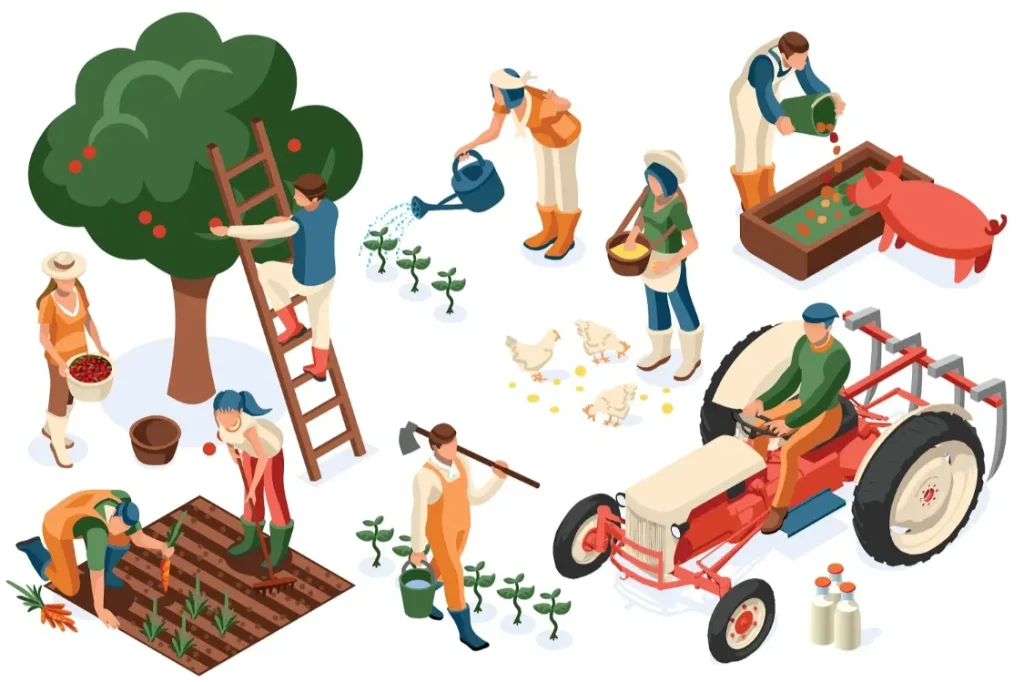
Benefits Of Agriculture
Agriculture has many benefits for humans and the planet, such as:
| Benefits Of Agriculture | Description |
|---|---|
| Food Security | 1- Agriculture provides us with a steady and reliable source of food, which is essential for our survival and well-being. 2- Agriculture also contributes to the diversity and nutrition of our diets, as it offers a variety of crops and animals to choose from. |
| Economic Development | 1- Agriculture generates income and employment for millions of people around the world, especially in rural areas. 2- Agriculture also supports other sectors of the economy, such as manufacturing, processing, transportation, and trade, by providing raw materials and markets. |
| Social Stability | 1- Agriculture fosters social cohesion and harmony, as it brings people together in communities and cooperatives. 2- Agriculture also promotes cultural identity and heritage, as it reflects the values and traditions of different groups and regions. |
| Environmental Conservation | 1- Agriculture can enhance the environment, by maintaining soil fertility, water quality, biodiversity, and climate regulation. 2- Agriculture can also reduce greenhouse gas emissions, by sequestering carbon in plants and soils, and by replacing fossil fuels with biofuels. |
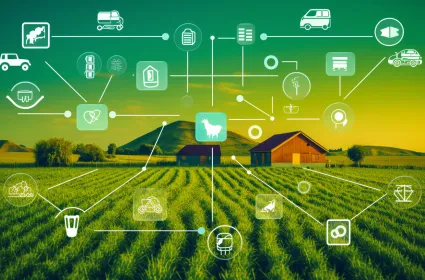
Challenges Of Agriculture
Agriculture also faces many challenges in the present and future, such as:
| Challenges Of Agriculture | Description |
|---|---|
| Population Growth | 1- Agriculture has to feed a growing and hungry world, as the global population is expected to reach 9.7 billion by 2050. 2- Agriculture has to increase its production and productivity, while also meeting the changing and diverse demands of consumers. |
| Resource Depletion | 1- Agriculture has to use the limited and finite resources of the planet, such as land, water, energy, and nutrients. 2- Agriculture has to optimize its resource efficiency and utilization, while also reducing its resource wastage and pollution. |
| Climate Change | 1- Agriculture has to adapt to the changing and unpredictable climate, such as rising temperatures, erratic rainfall, extreme weather events, and pest and disease outbreaks. 2- Agriculture has to enhance its resilience and flexibility, while also mitigating its climate impact and vulnerability. |
| Competition And Conflict | 1- Agriculture has to cope with the increasing and complex competition and conflict, such as market fluctuations, trade barriers, price volatility, land grabbing, and water scarcity. 2- Agriculture has to improve its cooperation and collaboration, while also protecting its rights and interests. |
Future Of Agriculture
Agriculture has a bright and promising future, as it has the potential and opportunity to overcome its challenges and achieve its goals.
And Agriculture can leverage the power and innovation of science and technology, such as biotechnology, nanotechnology, information and communication technology, and renewable energy.
Agriculture can also embrace the principles and practices of sustainability and agroecology, such as organic farming, permaculture, agroforestry, and urban agriculture. It can also empower and engage the people and stakeholders of agriculture, such as farmers, consumers, policymakers, researchers, and educators.
Related Posts:
What Is Subsistence Agriculture Definition? Features, Issues
How To Make Your Own Fertilizer For Jasmine Plant And Benefits
How To Grow Plums At Home: Variety, Planting, Care Tips & Harvesting
Homemade Fertilizer For Palm Trees: Benefits, Nutrients & Best Ingredients

Meet Our Expert Agricultural Administrator
Welcome to agrigreenhands.com, your dedicated hub for all things related to agricultural farming. Leading the way in our commitment to sustainable and innovative practices is Jawad Hussain, our esteemed administrator with a profound background in agriculture….

